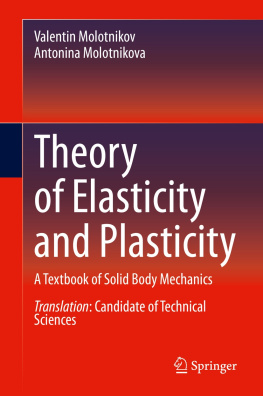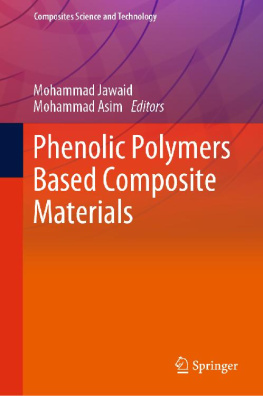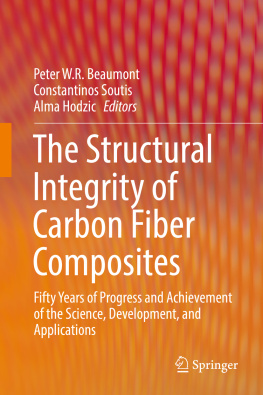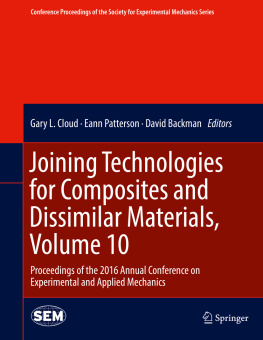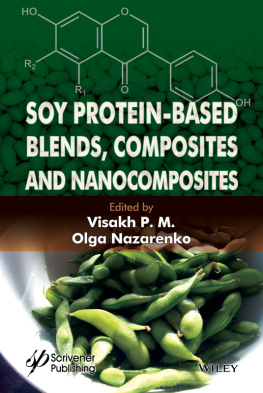Principles of Composite Material Mechanics, Fourth Edition
Ronald F. Gibson

CRC Press
Taylor & Francis Group
6000 Broken Sound Parkway NW, Suite 300
Boca Raton, FL 33487-2742
2015 by Taylor & Francis Group
CRC Press is an imprint of Taylor & Francis Group, an Informa business
No claim to original U.S. Government works
Version Date: 20160226
International Standard Book Number-13: 978-1-4987-8824-3 (EPUB)
This book contains information obtained from authentic and highly regarded sources. Reasonable efforts have been made to publish reliable data and information, but the author and publisher cannot assume responsibility for the validity of all materials or the consequences of their use. The authors and publishers have attempted to trace the copyright holders of all material reproduced in this publication and apologize to copyright holders if permission to publish in this form has not been obtained. If any copyright material has not been acknowledged please write and let us know so we may rectify in any future reprint.
Except as permitted under U.S. Copyright Law, no part of this book may be reprinted, reproduced, transmitted, or utilized in any form by any electronic, mechanical, or other means, now known or hereafter invented, including photocopying, microfilming, and recording, or in any information storage or retrieval system, without written permission from the publishers.
For permission to photocopy or use material electronically from this work, please access www.copyright.com or contact the Copyright Clearance Center, Inc. (CCC), 222 Rosewood Drive, Danvers, MA 01923, 978-750-8400. CCC is a not-for-profit organization that provides licenses and registration for a variety of users. For organizations that have been granted a photocopy license by the CCC, a separate system of payment has been arranged.
Trademark Notice: Product or corporate names may be trademarks or registered trademarks, and are used only for identification and explanation without intent to infringe.
Visit the Taylor & Francis Web site at http://www.taylorandfrancis.com
and the CRC Press Web site at www.crcpress.com
CRC Press is a premier publisher of scientific, technology and medical content, reaching around the globe to publish the pioneering achievements of science that provide researchers, professionals, and students with the resources they need to make further advances. CRC Press is a member of Taylor & Francis Group, an informa business.
For more authoritative books in your field and for in-depth information about CRC Press books, visit www.crcpress.com
- Join our email list to receive exclusive, unadvertised discounts and alerts when new books publish in your field
- Visit Featured Authors to learn about your favorite author with detailed bios, news about their work, and discussions of their research
- Read the latest book reviews from industry experts, influencers, and thought leaders about STM (Science, Technology and Medicine) reference and textbooks
The tables in this ebook have been modified to enhance the reader experience. On compatible devices, the enhancement should keep the header rows visible as you scroll through a table.
Please report any issues with this ebook or any desired enhancements to the .
www.crcpress.com
To my wonderful family, Maryanne, Tracy, Tola, Sophie, and Aidan, and the memory of my parents, Jim and Lora Gibson
Preface to the First Edition
Composite materials is truly an interdisciplinary subject, and the number of students taking courses in this area is steadily increasing. Books on the subject tend to emphasize either the mechanics or the materials science aspects of composites. Principles of Composite Material Mechanics is mechanics oriented. Composite materials technology is new enough for many working engineers who have had no training in this area, and so, a textbook in composite material mechanics should be useful not only for the education of new engineers, but also for the continuing education of practicing engineers and for reference. The high level of interest in composite materials, the interdisciplinary nature of the subject, the need to reeducate practicing engineers, and the need for a new composite mechanics textbook at the introductory level all led to my decision to write this book.
Chapters 1 through 7 form the basis of a one-semester senior/graduate-level course in mechanical engineering, which I have taught for the last 15 years. Chapters 8 through 10, along with selected papers from technical journals and student research projects/presentations, form the basis of a second one-semester course, which is taken only by graduate students, and which I have taught for the last 4 years. The book could also be the basis for a two-quarter sequence by omitting some topics. The prerequisites for the course are knowledge of mechanics of materials, introduction to materials engineering, and ordinary differential equations, and the previous exposure to linear algebra is highly desirable. For some of the graduate-level material, earlier courses in advanced mechanics of materials, elasticity, and partial differential equations are recommended, but not required.
Some of the basic elements of composite mechanics covered in this book have not changed since the first books on the subject were published in the 1960s and 1970s, and, where possible, I have tried to use the accepted terminology and nomenclature. For example, the coverage of stressstrain relationships and transformation of properties for anisotropic materials in Chapter 2 and the classical lamination theory in Chapter 7 is consistent with that of the previous textbooks such as the Primer on Composite Materials by Ashton, Halpin, and Petit, and Mechanics of Composite Materials by Jones. However, rather than beginning the study of laminates by jumping directly into classical lamination theory, I have concluded that a better pedagogical approach is to first introduce the basic laminate concepts by using the simpler theory of laminated beams in pure flexure. Also, I believe that the concept of an effective modulus of an equivalent homogeneous material, which had previously been covered only in advanced books such as Mechanics of Composite Materials by Christensen, is essential for the proper development of heterogeneous composite micromechanics. Thus, effective modulusconcepts are emphasized from their introduction in Chapter 2 to their use in the analysis of viscoelastic and dynamic behavior in Chapter 8.
Although many basic concepts have been presented in the earlier textbooks, numerous new developments in composite mechanics over the last two decades have made it increasingly necessary to supplement these books with my own notes. Thus, I have an added coverage of important topics such as hygrothermal effects in Chapter 5, discontinuous fiber composites in Chapter 6, viscoelastic behavior and dynamic behavior in Chapter 8, fracture in Chapter 9, and mechanical testing in Chapter 10. The coverage of experimental mechanics of composites has been expanded to include summaries of the most important ASTM standard test methods, many of which did not exist when the early mechanics of composites books were published. A variety of example problems and homework problems, a number of them related to practical composite structures, are also included.
The contents of this book represent the cumulative effects of more than 25 years of interactions with colleagues and students, and I would be remiss if I did not mention at least some of them. My fascination with composites began in 1965 with my first engineering position in what is now a part of Oak Ridge National Laboratory in Tennessee, where I was involved in the design and development of a high-speed rotating equipment. At that time, I realized that the advantages of using composites in a rotating equipment are numerous, as is the case in many other applications. My experiences working with Dean Waters and other colleagues in the mechanical development group in Oak Ridge have had a strong influence on my later career decision to emphasize composites research and education. My doctoral research on vibration-damping characteristics of composites with Robert Plunkett at the University of Minnesota further cemented my desire to continue working in the composites area and ultimately led to my career in university teaching and research.




